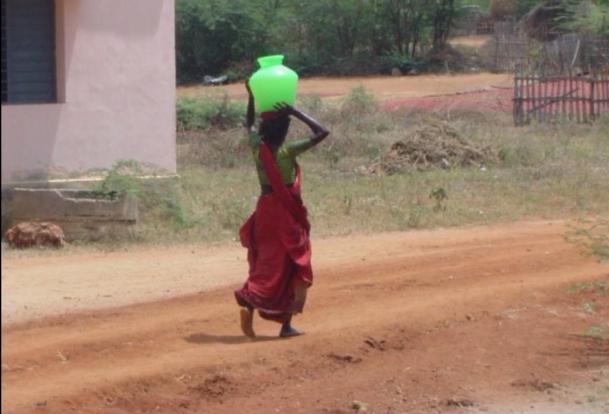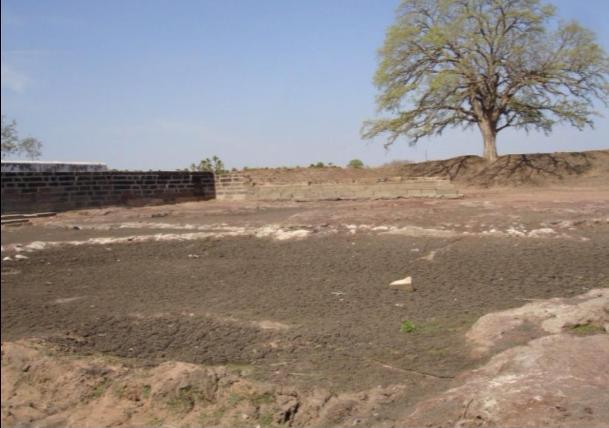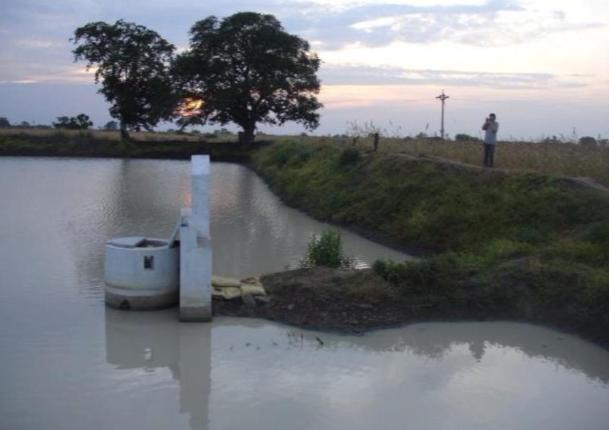Depending upon how you see it, in the geographical expanse of India a train journey could be anything that one would wish it to be ... ir could be a surveyor's way of reconnaissance or an anthropologists opportunity for a participative observation of the cultural mélange travelling along in the coach or a writer's opportunity to draw inspiration from the world around him. And for an amateur water professional it’s a fast run across the numerous river basins, lakes, canals, small ponds and village tanks in the distant villages that offers an opportunity to observe and learn better than any water resource planning book ever read at the university ! One such train journey from Bangalore, lying in the deccan plateau to New Delhi up in the north, with the vast Gangetic plains stretching out in every direction, had a lot to observe. Much about our water resources and the way we have come to use them over the years.
The changing landscapes, no matter which part of the country you are looking at, has one thing in common- human impact ! From the hills to the plains to the plateau, human imprint is large and clear. And this makes me think about the way we plan and manage our natural resources. It makes me think of the ideas theories and approaches that the planners and professionals put forth and toy with, from time to time! How could we even think of approaching this without considering the dynamic web of social, cultural and political interactions that are entrenched in every natural resource that our nation harnesses today !
Ideas, that I find have much to do with the state of our rivers and watersheds today. Some believed in large irrigation projects, much like the Indira Gandhi Canal, some thought we should interlink the rivers scoring against irrigation issues and floods at the same time, and few other thought that multi-purpose river valley development (MPRVD) is the way to go! The field of development sciences, just like other fields, is prone to successive, sometimes cyclical, discoveries of ideas and theories that inform or inspire practice for a number of years (Cornwall and Brock, 2005). With this, François Molle of Institut de Recherche pour le Développement (IRD), opines, " For some, these are mere fads of the day propped up by 'buzzwords'; for others, they reflect the evolution and gradual refining of knowledge and concepts; and for still others, they reflect the power and embody the world view of those who have the power to disseminate them."
I have been exploring if IUWM too has been a cyclical discovery which is inspiring the present set of planners. Although IUWM specifically is an approach towards urban water management, a basic tenet that it shares with any other the watershed development approaches is the role of community. Community based water management need not necessarily imply greater accountability, it could be much more than that. Indeed, in cases where community participation has been leveraged well, it has had significant impacts on multiple fronts like Efficiency, Equity and Environmental sustainability.

Illustration of the 3Es and their relations in Integrated Water Resource Management
A case in point is Thangammalpuram village in coastal Tamil Nadu that I have had the opportunity to document during the early years of my exposure to resource management and community development. It is a small agricultural village in the Thoothukudi district.
Location of Thoothukudi district
The aquifer in the region are contaminated with saltwater intrusion. One of the ladies from the village describes their situation as– “We had to carry water from a village 2 km distant from our own village. We used to get only one pot of water ( about 20 liters ) everyday, for the whole family. We used to think twice before giving a glass of water to the guest visiting us.”This was the case for years until the year 2004.

An old lady from Thangammalpuram, carrying water back home from a distance of 2 kms.
In 2004, a local NGO People’s Action for Development (PAD) which was working in the village on a Child centered Community Development project did a participatory rural appraisal (PRA) of the immediate needs of the community. From this activity they figured out the pressing need of the village was to meet its drinking water shortage. In the same activity the villagers did an asset mapping of their village. In the list of assets came up the temples, schools and an old water tank.This traditional tank which was defunct since long was used as dump yard for garbage and it was heavily silted.

The tank, heavily silted and dirty before the village cleanup.
The storage capacity of the tank was far more than enough to carry the village through a very hot summer and even longer if the villagers managed the water from the tank judiciously. PAD ( the local NGO) initiated the revival of this tank with the leadership of the members from the community.

The villagers working on the cleanup of their village tank.

Every memeber of village, women, men and even kids worked to revive their village tank.
Noteworthy is the way how seemingly unrelated but serious issues like caste discrimination also gets addressed in projects like these. Earlier the community was bitterly divided into castes and sects, but once this revival process began everyone had to contribute. Everyone had to interact. The NGO pumped in some funds and the rest was pooled in by the villagers. The villagers contributed in kind, pledged their labour, cleared the silted lake, constructed bunds around the tank, all of it working together.

Tank filled up with water from the first showers, after the cleanup.

Women carrying water from the clean tank.
It was in early 2008 that I visited this village. The tank was in good condition and with plentiful water. The water from the tank is used for drinking purposes. There is a sense of pride in the people about what their village has achieved in the region marred with acute water shortage. One of the elderly members of the village development committee shows me a cutting of a news paper article on their village with a loud "Villagers bootstrap their way for water".

Newspaper article in the Indian Express, Madurai edition
For those who would like to hear it from the villagers themselves, I have uploaded the documentary in the following two links:
/articles/iuwm-and-participatory-developmentcommunity-participation-has-significant-impact